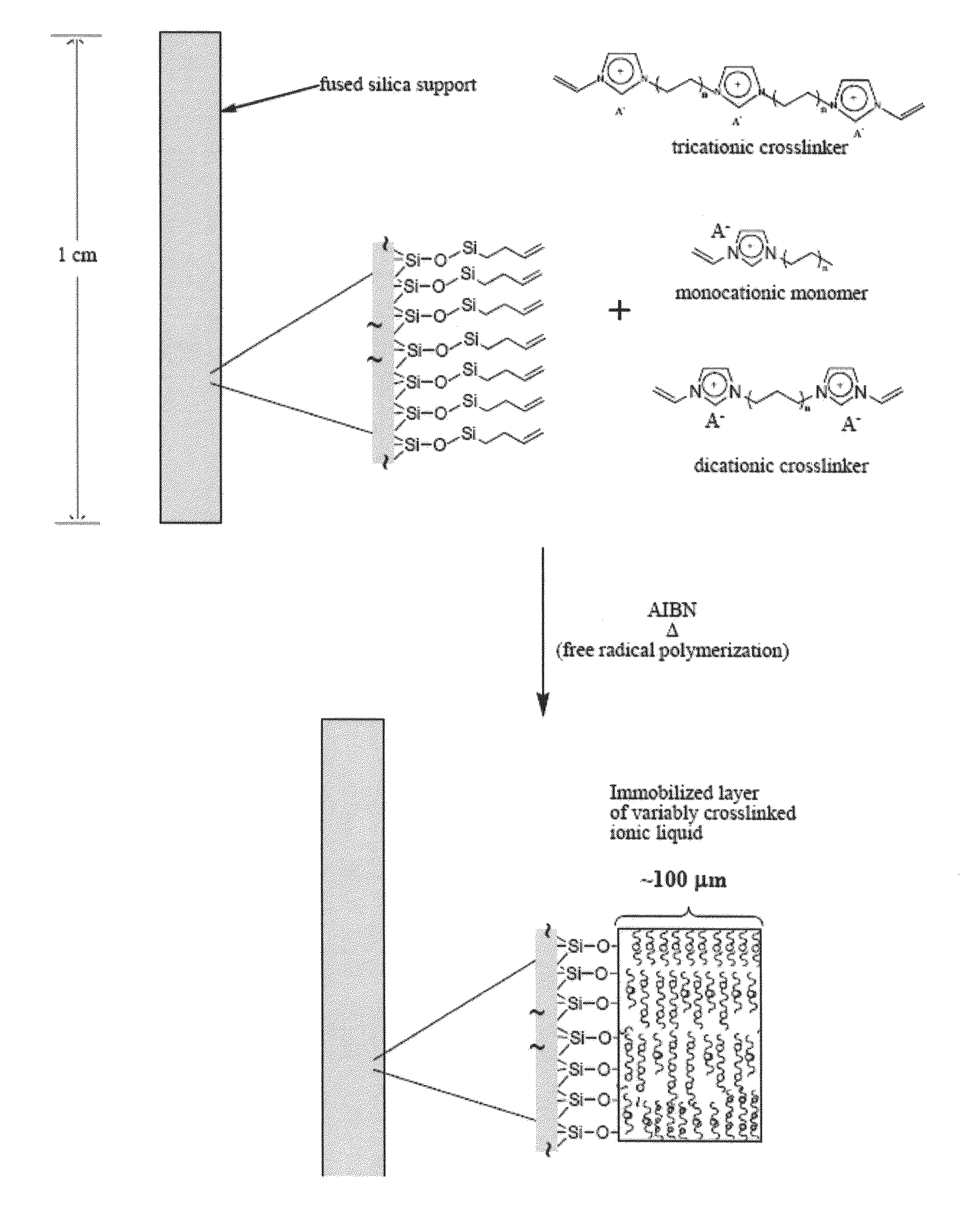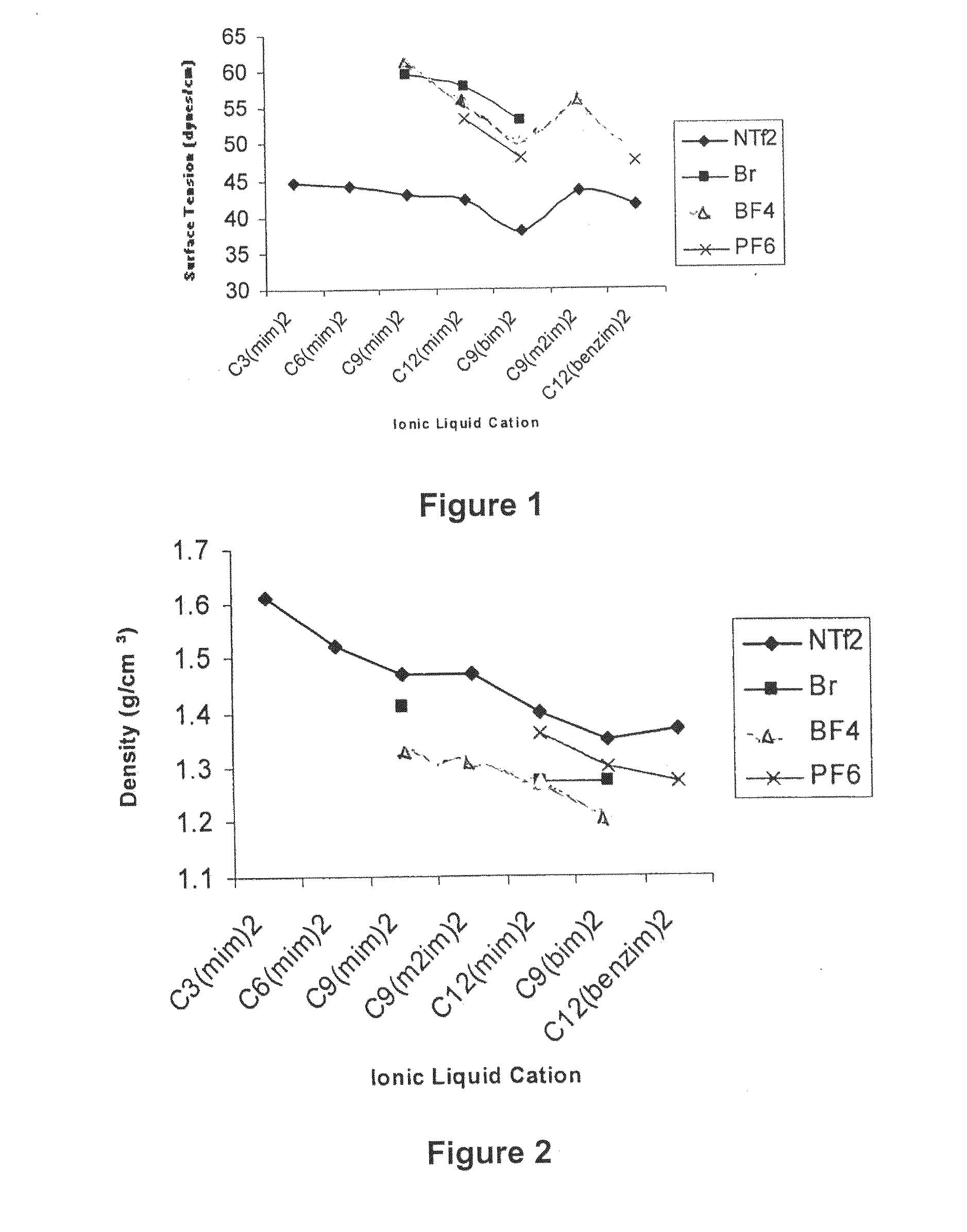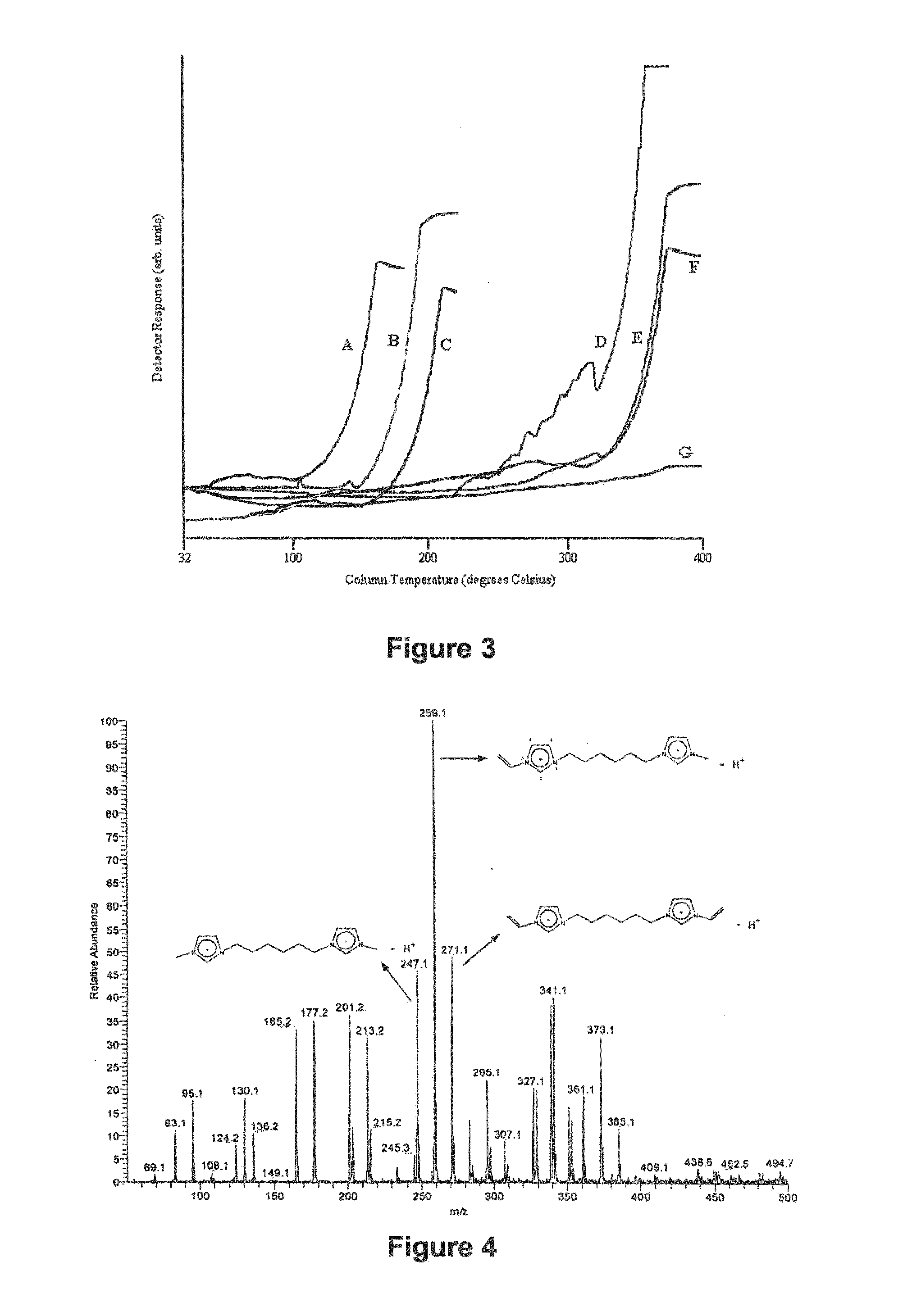Polymeric Ionic Liquids, Methods of Making and Methods of Use Thereof
- Summary
- Abstract
- Description
- Claims
- Application Information
AI Technical Summary
Benefits of technology
Problems solved by technology
Method used
Image
Examples
example a
Example 10
Synthesis of “Unsymmetric” Diionic Salts
[0332]The following compounds are used for the synthesis: the alkyl linkage compounds:
the aryl linkage compounds:
the PEG linkage compounds:
[0333]The “unsymmetric” dicationic ILs are synthesized from dibromo-linkers according to the following steps:
[0334]First, the monocation intermediate is synthesized by reacting with the linkage compound that is in excess during the reaction to decrease the symmetric dicationic byproduct. For an example, the synthesis of ammonium-based monocation is shown in Scheme 1.
[0335]Then, the unsymmetrical diicationic ionic compound with the desired anion is synthesized by the metathesis reaction from the dibromide compound that is obtained as an example of ammonium-imidazonium based IL in Scheme 2.
[0336]Next, the unsymmetrical diicationic ILs are synthesized from the linkage compound having both bromo- and hydroxyl-groups, shown as an example of ammonium-imidazonium based IL in Scheme 3.
Example B
Polymeric I...
example 1
[0475]Versatility of Ionic Liquids in Separation Science: Determination of Low Volatility Aliphatic Hydrocarbons and Fatty Acid Methyl Esters Using Headspace Solid-Phase Microextraction Coupled to Gas Chromatography
[0476]Static headspace-gas chromatography (HS-GC) is a common approach used for the analysis of analytes in the vapor phase that are in equilibrium with a solid or liquid phase. In the sampling of less volatile analytes, it is often necessary to thermostat the liquid or solid phase at elevated temperatures, thereby increasing the equilibrium amount of analyte present in the headspace. However, heating of the sample often causes partial vaporization of the solvent, resulting in increased pressure build-up within the sample vial. For that reason, it has been stated that the vapor pressure of the extracting solvent dramatically affects the enrichment factor achieved in HS-GC.
[0477]The inventors herein demonstrate the versatility of ILs in separation science by introducing a ...
example c
Example 2
[0497]Analytical Performance of the Method
[0498]Calibration curves were obtained using working standard solutions of analytes in the [HMIM] [FAP] IL at different concentrations while performing the extraction at the optimum extraction time and temperature. The figures of merit for the entire method, shown in EXAMPLE C Table 2, include the sensitivity, calibration range, correlation coefficients, error of the estimate and limits of detection.
EXAMPLE C TABLE 2FIGURES of merit of the calibration curves for the overallmethod using a three component extraction and separationsystem comprised of ionic liquids.CalibrationErrorLODbrangeof the(mg ·Analyte(mg · kg−1)Slope ± SDaestimateRkg−1)Tricosane1-45137.7 ± 3.4 1640.9980.1Hexacosane1-35123.4 ± 4.6 1510.9960.2Triacontane1-3036.8 ± 2.236.30.9930.3Methyl behenate2-3025.9 ± 0.528.30.9980.4Methyl1-4513.4 ± 0.714.70.9940.4heneicosanoateMethyl2-4512.6 ± 0.729.60.9900.6tetracosanoateaSD: error of the slope for n = 8 calibration levels.bLO...
PUM
| Property | Measurement | Unit |
|---|---|---|
| Temperature | aaaaa | aaaaa |
| Time | aaaaa | aaaaa |
| Transition temperature | aaaaa | aaaaa |
Abstract
Description
Claims
Application Information
 Login to View More
Login to View More - Generate Ideas
- Intellectual Property
- Life Sciences
- Materials
- Tech Scout
- Unparalleled Data Quality
- Higher Quality Content
- 60% Fewer Hallucinations
Browse by: Latest US Patents, China's latest patents, Technical Efficacy Thesaurus, Application Domain, Technology Topic, Popular Technical Reports.
© 2025 PatSnap. All rights reserved.Legal|Privacy policy|Modern Slavery Act Transparency Statement|Sitemap|About US| Contact US: help@patsnap.com



